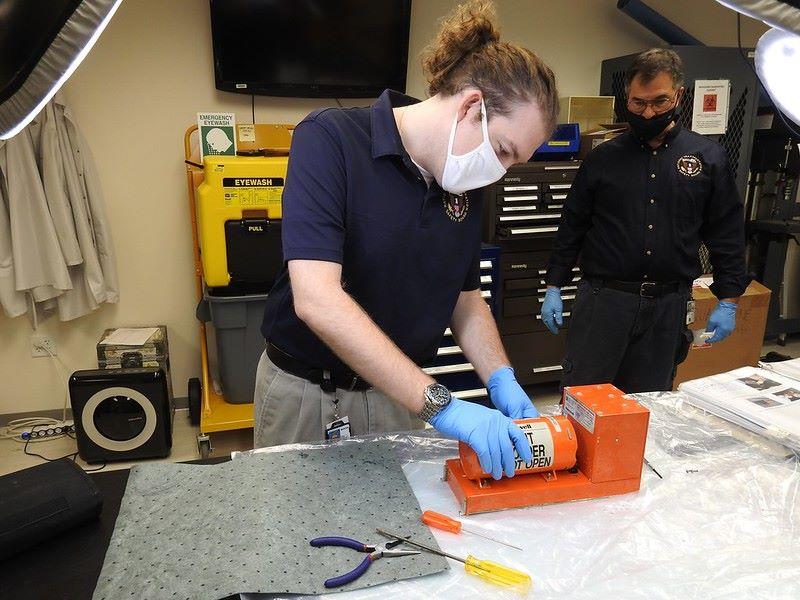
A push to collect more data to help mitigate safety risks has helped justify a pending FAA proposal to mandate cockpit voice recorders (CVRs) with 25-hr. durations.
The FAA confirmed March 16 that a long-stalled plan to propose upgrading CVRs from current 2-hr. recording minimum to at least 25 hr. is moving forward. Few details have been released about the rule’s timing or contents, but sources with knowledge of the agency’s thinking told Aviation Week that the proposal will cover newly delivered aircraft to start. Retrofits will be considered, possibly in a follow-on mandate.
“The FAA is committed to addressing the NTSB recommendations,” the agency said. “We are initiating rulemaking that will require Cockpit Voice Recorders to capture 25 hours of information. We will also establish an Aviation Rulemaking Committee to explore how to make greater use of data gathered by the airplane and its systems, including expanded flight data monitoring.”
Requiring 25-hr. CVRs for large commercial aircraft would harmonize FAA with the European Union Aviation Safety Agency (EASA), which put the mandate in place for newly delivered aircraft starting in January 2021. The EASA mandate aligns with International Civil Aviation Organization standards adopted in 2016.
CVRs that capture the last 25 hr. of an aircraft’s operation will help fill an increasingly relevant gap in U.S. incident investigation and risk mitigation strategies. Current FAA standards require 2-hr. durations, and guidance about preserving recorder data focuses on post-flight actions, such as pulling circuit breakers to stop recorders, following immediately recognizable “reportable incidents.”
Problems with this approach have been evident for years. In-flight emergencies, such as diversions, that last longer than the CVR’s duration can result in key data loss, for instance. Occurrences such as runway incursions or losses of separation aren’t always recognized right away, and the aircraft involved may continue on, wiping out valuable information in the process.
“In the event of a major or catastrophic accident, the CVR is typically deactivated due to a loss of electrical power (without manual intervention), and the relevant audio that was recorded before the accident is preserved,” the NTSB wrote in a 2018 recommendation letter that urged FAA to adopt the 25-hr. CVR minimum. “However, following less severe events in which the airplane’s electrical system remains functional, pilots or others must act to deactivate the CVR as promptly as possible after landing to preserve the most relevant audio. Sometimes a delay in reporting an event to the FAA, the NTSB, or the operator also results in a significant delay in actions to safeguard recorder data.”
The rarity of commercial aviation accidents means collecting data on incidents and potentially risky trends is critical to helping industry target safety improvement efforts. The FAA used a March 15 safety summit to launch a focused effort on looking at a string of recent incidents and quickly developing risk-mitigation strategies. In at least six of these incidents—all runway incursions or airspace separation issues involving multiple Part 121 aircraft—no CVR data was preserved, NTSB Chair Jennifer Homendy confirmed at the summit.
Those incidents, combined with Acting FAA Administrator Billy Nolen’s emphasis on mining existing data sources and tapping new ones as part of industry’s fresh push to limit occurrences, helped kick-start the CVR rulemaking.
The NTSB has been recommending various CVR-related changes, including longer-duration recording capability, for more than 20 years. FAA in 2020 proposed to its rulemaking management council a 25-hr. CVR rule, but it was rejected “due to competing priorities and resources,” Nolen told the NTSB in September 2022. The plan was to revisit the subject in 2023, he added.
Part of the issue in 2020 was concern that the proposal would not pass required cost-benefit reviews. The growing recognition that incident prevention is the key to improving safety, combined with the lack of data from recent high-profile occurrences, has helped shift the cost-benefit equation, the sources said.
